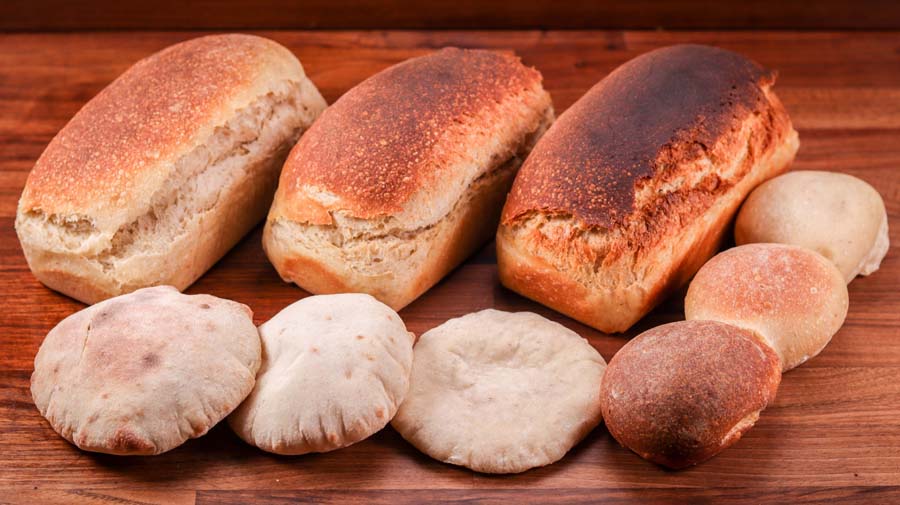The ability to tell when bread is fully baked comes with experience. The more you bake the sooner you will learn to see the signs.
In this video I will show you some of the signs to look out for and give you some tools to get you off to a good start.
Personally, I think the best way to learn is by following someone else. So, if you are baking one of my breads, then a good indication of doneness will be the amount of time the bread has been baking following the recipe instructions. If you bake at the suggested temperature and for the suggested time, then your bread will most likely be fully baked once the timer goes off. Of course, ovens are different, so there can be variations.
But you can only follow recipes for so long before getting bored. There will come a time when you want to experiment and create your own recipes and try something new. Especially once you’ve gone through the Principles of Baking playlist.
Probing the temperature.
If you are just starting off, then you can use one tool that will never let you down – a temperature probe. Most breads will be fully baked once the internal temperature reaches above 94C (200F). Enriched rolls and loaves that must be soft and fluffy can be baked to about 92C (198F). Some breads require a higher internal temperature. Dense and heavy rye breads or higher hydration whole wheat breads should be baked closer to 99C (210F).
It is worth mentioning that by the time the internal temperature rises above 100C (212F) the crust will most likely be burned.
Looking at the crust.
Looking at the crust is another great way of telling when a bread is fully baked. The Maillard reaction sometimes combined with caramelization makes it golden brown and appetizing looking. If the crust is pale, then the inside is most likely raw.
Of course, if a loaf is baked at too high of a temperature, then it may become too dark before the middle has fully baked. The same can happen when bread is placed too close to the heating element.
Generally, you want to bake enriched and sweetened doughs and small rolls at lower temperatures and farther away from the heat source. Larger loaves and lean doughs can be baked at much higher temperatures.
A beautifully browned crust is a great indicator of doneness.
There is such a thing as baking bread dark. The darker the crust the more intense the flavour. Slow fermented breads made with preferments or sourdough leaven especially with some percentage of whole grain flour are great candidates for dark baking. You can get close to burnt without it actually being burnt. It’s up to personal taste.
Feeling the weight.
Another way of telling doneness is by feeling and listening to the bread. The only way to learn how to feel and hear it is by practicing on every bake.
Before you place the loaf in the oven lift it and try and remember how heavy it feels. When you take it out of the oven lift it again and try and compare it to how it felt before baking. A fully baked loaf will feel quite a bit lighter. Coupled with the fact that it would have puffed up quite a bit during baking it should make for a noticeable difference when you look at it and handle it.
Listening to the loaf.
Tap the bottom of your loaf. It should sound hollow, and you will almost hear a soft ‘echo’ in the sound. Not all breads will make this sound though. A dense rye bread will not be as audible. If you repeat these actions on every bake you will start to be able to piece the signs together and tell when a bread is ready even without thinking about it.
Use the temperature probe for confirmation if you are unsure.
I still use it for rye bread because it is quite hard to tell when it’s ready. Perhaps I have not baked enough of them yet…
Watch the video here



